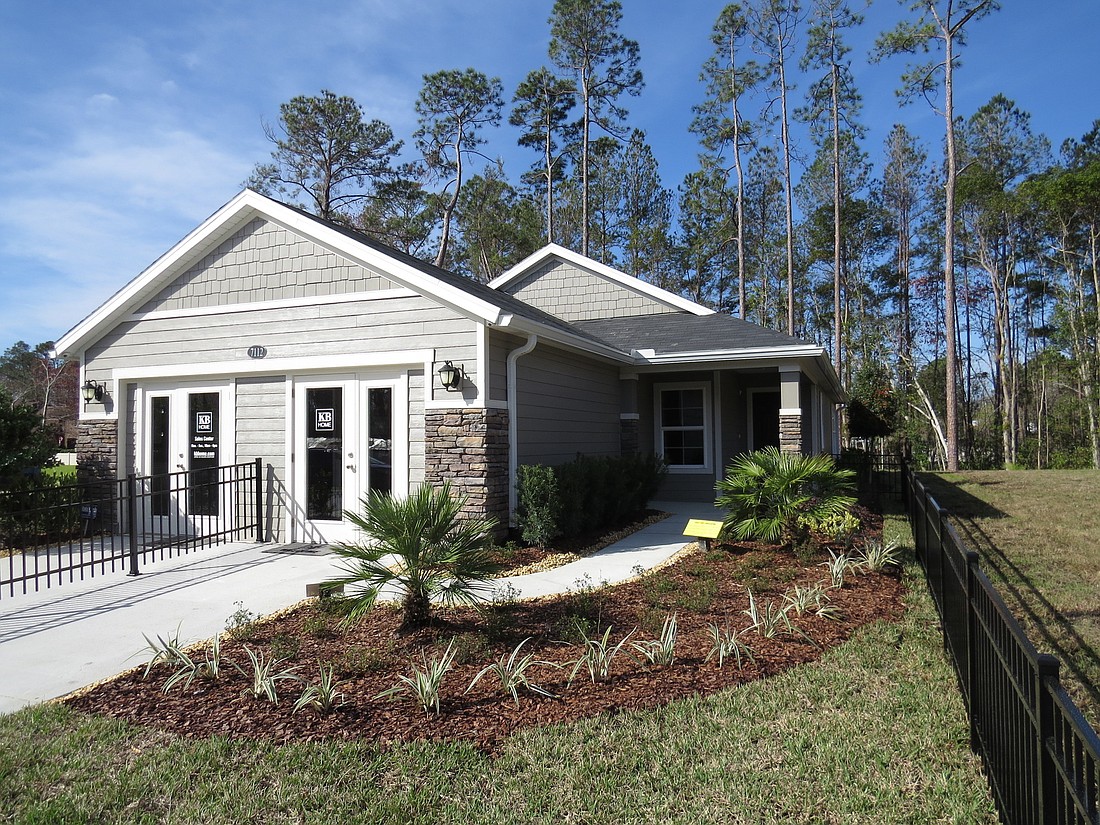
Top national homebuilding leaders contend the political and financial climate suggests continued economic recovery through 2019.
That looks even brighter for Jacksonville.
Robert Dietz, chief economist of the National Association of Home Builders, said the Jacksonville region is among the healthiest in the nation for home sales, construction and pricing.
Dietz and James Tobin III, the builders’ chief lobbyist, spoke this month to members of the Northeast Florida Builders Association.
They spoke separately and then together on a panel discussion moderated by JAXUSA Partnership Senior Vice President of Strategy & Business Development Cathy Chambers.
Their presentation at the Prime Osborn Convention Center preceded the Builders and Remodelers Showcase on March 8.
The topic was homebuilding profitability and the impact of politics.
“Things are really positive for homebuilders going forward,” Dietz said.
That optimism doesn’t come without some obstacles.
Historically low unemployment, flight from high-tax states and population growth in Northeast Florida will exacerbate the area’s tight housing supply, while rising materials costs and unmet demand will continue to adversely affect affordability, Dietz and Tobin said.
Available labor also is a concern.
But hope is on the horizon.
Tax reform is expected to bring more workers to the market who had given up looking for employment. Those workers may be older, though, as the bulk of those who abandoned the job market during the Great Recession were baby boomers.
“The tax reform bill should boost labor supply,” said Dietz.
“We have a labor shortage right now, but we think for the next 10 years, if these rules remain in place, we could be looking at an additional million workers just with the tax cuts,” he said.
On the reverse side, tax reform appears to be heating up the economy, which will mean higher interest rates as a hedge against inflation.
As companies take advantage of the growth cycle and new businesses are created, competition for workers will intensify, resulting in higher labor costs.
Dietz said the unemployment rate is low, but the job-openings rate keeps rising.
“There are lots of unfilled open jobs and it’s harder to recruit those workers. Businesses compete and push wages up. The Federal Reserve sees that as inflation and that will cause them to raise interest rates faster,” he said.
The gap often is filled by immigrants, Tobin said, and the debate in Washington over immigration policy keeps some industries understaffed, particularly construction.
“Twenty-three to 25 percent of the construction industry is immigrant labor,” Tobin said.
“This is still a hot button on Capitol Hill, but we want to see immigration reform and see legal immigration fill that 25 percent delta for full employment. As an industry, while not divided, it’s a different conversation we need to have,” he said.
The Jacksonville area continues to buck population trends in other metropolitan areas, specifically in states such as New York, New Jersey and California, they said.
But with migration from those states to Florida and Jacksonville in pursuit of a lower cost of living and higher quality of life, the housing challenges intensify.
Dietz said Jacksonville’s population has increased at three times the national average.
“Prices are going up because you don’t have enough inventory. You need to build more, yet affordability is a big challenge,” he said.
That challenge is common in growth areas in the South and Southwest.
“We’ve had a decline in housing affordability,” said Dietz. “We’ve had home prices growing faster than income growth.
“Why? Not enough inventory,” he said. “Scarcity has boosted home prices.”
Dietz said there’s a solution to deliver to Capitol Hill.
“If you want to help (homebuilders) fight inflation, build more housing. Why aren’t we building enough houses? Not enough workers, not enough lots, not enough lending for builders, regulatory hurdles and rising materials costs,” he said.
As the Federal Reserve continues its attempt to keep its thumb on inflation, Dietz said he expects interest rates on a conventional 30-year mortgage to slowly climb into the low 5 percent range by the end of 2019.
“I don’t think housing demand will shrink until the mortgage rate is around 6 percent,” said Dietz. “The challenge then to getting buyers into the market is saving for the down payment.”
An additional challenge to bringing in more sidelined workers into the labor force, Dietz said, is the age of those workers.
The largest group that has opted out comprises those 55 and older, the baby boomer generation.
Generation X, which followed, is smaller in number as well as with the number of those disenfranchised from employment.
And millennials, Dietz said, often are mischaracterized.
Unlike the stereotypical traits assigned to that generation, Dietz said millennials are ambitious and, as they age, will seek more of the traditional values of their predecessors. The question is, will the housing market be ready for them.
“We think the market is really going to swing toward home ownership, and that’s where we see the homeowner rate stabilizing,” Dietz said.
He said it will be trend growth, “but we are well below what we think the market could absorb if we had the workers and the land.”
Dietz said that as millennials age, the demand will rise for single-family housing.
“So that means we need to build some houses in the next several years,” he said.